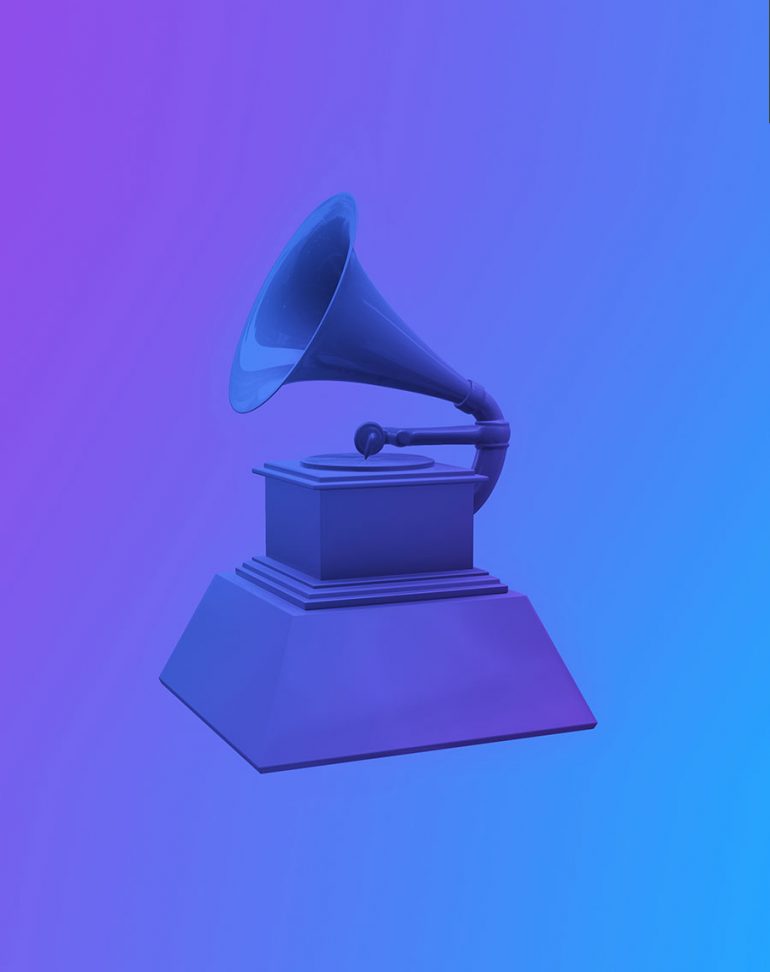SMPL Q&A is a blog feature in which we interview experts on all things relevant to branding, design and simplicity. In this Q&A we speak with Matthias Mencke, group creative director in L.A., on the strategy he employed when redesigning the Recording Academy’s visual identity.
How did the visual identity of the Recording Academy evolve?
The new identity includes an update to the entire visual identity system. It introduces a robust palette of visual tools, which will strengthen recall and take weight off the logo as the sole element to build brand awareness.
Besides creating static and animated wordmarks, which are used in lockup with the gramophone symbol, we also reinterpreted the iconic gramophone as a three-dimensional rendering. This modern take on the gramophone is used as key art or in the background, shown from various angles in a range of colors.
Additionally, we introduced a principal typeface and a fresh color palette with specific colors assigned to each of the sub-brands.
What was the scope of this rebrand for the Recording Academy?
This rebrand introduces a new brand architecture that clarifies the relationship between the Recording Academy and its sub-brands, which include the GRAMMY’s as well as MusiCares and the GRAMMY Museum. This new organization of programs and initiatives under the umbrella of the Recording Academy manifests itself not only in new logo treatments and masterbrand lock-ups, but also in the structure of the design system that establishes a connective tissue across the brand portfolio, yet allows for modulation of the expression for each of the main sub-brands. For example, the colorful renderings of the gramophone are used across the entire brand ecosystem, with specific color treatments assigned to key properties in the brand portfolio.
 The Recording Academy has so much brand equity. Did this factor into your thought process when designing their identity?
The Recording Academy has so much brand equity. Did this factor into your thought process when designing their identity?
Definitely—we didn’t want to create a dramatic shift that would result in losing existing equity. Instead, we decided to build on the tremendous recognition of the GRAMMY Awards and more closely associate it with the Recording Academy. In addition, we built on the equity of the existing gramophone but reinterpreted it in a new and relevant way to increase its relevance in the modern world.
What was your goal when designing this new identity?
We aimed to transfer equity from The GRAMMY Awards to the Recording Academy so that the latter would receive more credit for hosting this renowned event. By doing so, we intended to not only raise awareness of the Recording Academy, but also establish awareness of the other programs it provides. The idea was to emphasize the purpose of the organization – to be the voice of music creators – while highlighting all aspects of it, from celebrating the best in music, to providing aid to music creators in need, to defending intellectual property rights on Capitol Hill and mentoring the next generation of musicians.
We had a lot of fun designing a logotype for the Recording Academy that will be used in a dynamic rendering, where the width of the individual letterform takes on a rhythmic quality as it moves to the beat of the music to which it’s matched.
When designing this identity, how top of mind was the negative feedback companies have been receiving recently on their redesigned visual identities?
There will always be naysayers, the trolls of the web are always louder than the silent majority. However, it’s important to develop the brand identity in service of the long-term vision of the organization. As brand stewards, we’re not aiming to achieve short-term success, but build long-term brand value.
Additionally, once you launch a brand identity, you need a communications plan in place to respond to negative commentary. In the connected world we live in today, it’s important to stay on top of the public conversation and explain how the strategic approach of the redesign will serve the organization, the brand and the stakeholders it serves.
We hope audiences will realize that the Recoding Academy is the organization behind the GRAMMY Awards, but that it’s also so much more than just the GRAMMYS. By interpreting the iconic gramophone in a modern way, we hope people will see The Recoding Academy as an organization that helps shape the future of music.

Matthias Mencke is the group creative director in L.A.


